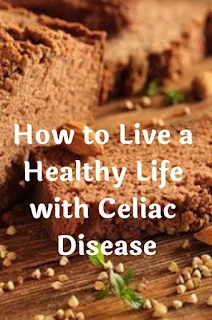
Celiac disease can be a life-threatening disease and is sometimes hard to diagnose or misdiagnosed. But with a proper diet, you can actually heal the damage to your intestines from celiac disease and live a healthy life. It is getting easier to find gluten-free foods for anything you want to cook and eat.
What is Celiac Disease?
Celiac disease is a disease of the digestive system that damages the small intestines and interferes with the body’s ability to absorb nutrition from food.
It can affect as many as 1 in 22 Americans among people with a parent, sibling or child who has celiac disease. It is caused by the body’s abnormal reaction to anything containing gluten.
The villi are what allow the nutrients from food to be absorbed into the blood. Sometimes celiac disease is misdiagnosed because it resembles numerous other medical problems including irritable bowel syndrome (IBS), ulcers, Crohn's disease, and even a parasitic infection.
Symptoms of celiac disease include:
- Chronic fatigue syndrome
- Bloating
- Intermittent diarrhea
- Constipation
- Abdominal pain
- Bone and joint pain
- Arthritis
- Iron-deficiency anemia that cannot be explained
- Tingling and numbness in the hands and feet
- Seizures
- An itchy skin rash which is called dermatitis herpetiformis
One of the problems with celiac disease is that symptoms can go on for years before the person is properly diagnosed. Or it can go on for years because some people don’t get the above gastric symptoms.
And the longer it goes on the more damage it does to the intestines and also the rest of the body due to the malnutrition because the body is not absorbing nutrients properly from food.
There is now more awareness about celiac disease and better tests are available. One of the ways a doctor can test for the disease is with a blood test.
Treating Celiac Disease With Diet
I have talked to several people who have celiac disease and they are always very depressed and about to give up with their health and think they can never get better.
The most important part of your new diet is to avoid anything containing gluten, and that is hard to do. Behind sugar, gluten is the second most prevalent food in the western diet.
Even people who follow a strict no-gluten diet will sometimes feel bad again; this is usually because they had something that contained gluten without knowing it.
Thankfully the US government in 2006 passed a food labeling law that requires all food labels to identify wheat and other commonly known allergens.
Even with vitamins and supplements, you have to be careful, you can now read on their labels if they are gluten-free.
Here is a list of safe gluten-free foods you can eat.
Allowed Foods
| |
Amaranth
Arrowroot
Buckwheat
Cassava
Corn
Flax
Indian rice grass
Job’s tears
Legumes, peas, lentils
Millet
Nuts
Potatoes
Sweet potatoes
|
Yams
Rice
Sago
Seeds
Sorghum
Soy
Tapioca
Teff
Wild rice
Yucca
All green and yellow vegetables
All fruits
** Oats
|
Conclusion
Learn everything you can about cooking, diet and healthy foods and the ingredients they contain. There are many new gluten-free recipe books out now that can teach you to cook healthy and gluten-free meals.
Going out to eat will be something you will learn about as will eating processed foods, you always have to be aware of the hidden gluten.
There might be lists of places to eat in your area that feature gluten-free dishes. This is a comprehensive list of safe gluten-free foods and here is a list of unsafe gluten-free foods. You can have a very healthy, tasty and rounded diet eating a strict gluten-free diet.
Don’t look at your new healthy diet with despair, embrace it as your new hobby and a way to heal your intestines and possibly reverse your celiac disease as long as you eat a proper diet.
By staying with this new way of eating, you can heal your intestines and rid yourself of the terrible feelings and damage that celiac disease can cause.
Learn all about the healthy foods you can eat and learn new gluten-free recipes you can cook and enjoy your food again without worrying about this health issue ruining your life.
About the Author
Sam Montana is a certified Food Over Medicine instructor from the Wellness Forum Health Center and certified in optimal nutrition from the Harvard T.H. Chan School of Public Health.
Copyright © 2009-2018 Sam Montana
Celiac.com
Digestive Tune-Up by Dr. John McDougall, MD
